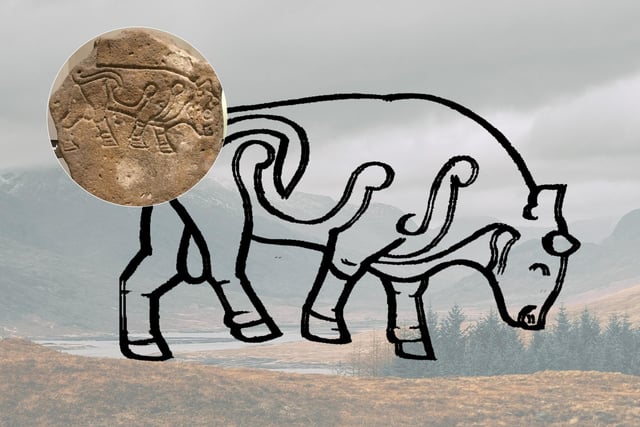

Pictish Symbols: 14 Pictish stones in Scotland and the meaning of their symbols
Hundreds of Pictish stones are scattered across Scotland with curious symbols that archaeologists and historians have studied for years, here’s what we know about them.
The Picts are famous for erecting majestic standing stones that feature enigmatic symbols. While located across many regions of Scotland, we know areas like Aberdeenshire acted as one of the chief heartlands for northern Picts and this heritage is reflected even in the modern place names used today.
The Picts’ expertly carved symbol stones, according to scholars, may have served as territorial markers, represented Pictish names and ranks, or recorded marriage treaties. Pictish symbols are divided into three groups; Animal, Geometric and Everyday Object symbols, they usually occur in pairs and there are roughly 50 documented symbols.
Some historians suggest that the symbols predate their existence on stones and may have been used for tattoos as was typical with Pictish tribes. Ultimately, our knowledge of Pictish culture is limited to modern scholars’ interpretation, so here are fourteen Pictish stone symbols and their meaning according to them.

1. Pictish Beast
The so-called “Pictish Beast” is considered one of the most enigmatic symbols to occur on Pictish stones as its identity is not fully understood. Some experts suggest it is a marine mammal, like a dolphin or whale, but unlike other animal symbols that are much more explicit this one is not which makes it intriguing. Stones featuring this symbol have been found in southern Scotland and northern England. Photo: via WikiCommons and Canva Pro

2. Crescent V-rod
The Crescent V-rod is another Pictish symbol which appears commonly on stones. The crescent component is thought to represent the sun or the moon; a skyward view. The ‘V’ is said to be composed of arrows, one pointing downwards and another upwards, it has been suggested that it represents the arrival of a soul at birth and its return upon death. A stone featuring this design can be found in the Orkney museum. Photo: via WikiCommons and Canva Pro

3. Burghead Bulls
The Burghead Bulls are a group of Pictish carvings that were found at Burghead Fort in Moray. As with many Pictish symbols depicting animals it is unclear if it had an intended meaning. Some scholars suggest that the bull symbol would adorn ramparts of the Pictish fort at Burghead on the coast in Moray. The bull itself was a symbol that represented strength and fertility. Photo: via WikiCommons and Canva Pro

4. Double Disc and Z-rod
The ‘double disc’ component of this Pictish symbol is widely considered ‘unknown’ in its meaning. One theory suggests that the disc represents quern stones which were used for hand-grinding e.g., for processing grain. This ties into the idea that the Z-rod could represent a single stalk of wheat. Neolithic peoples used these stones to grind grains and then boil them into a sort of porridge. Photo: via WikiCommons and Canva Pro
